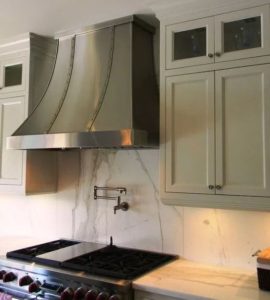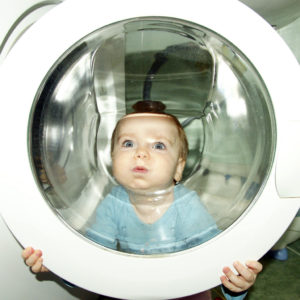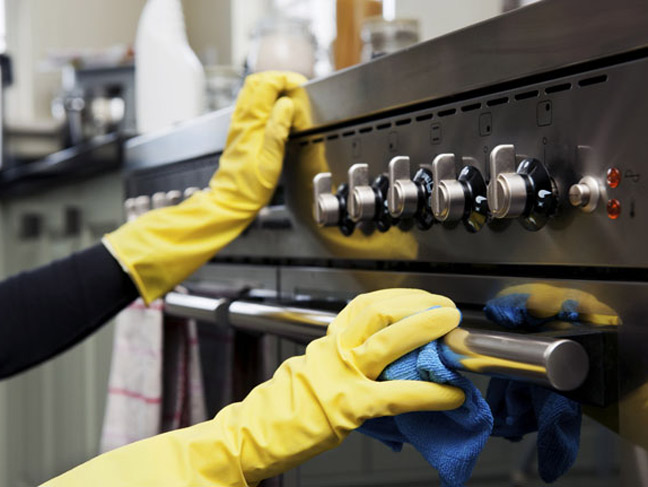Spring cleaning is different from you routine weekly cleaning. This is the one time when we get deep into every crevice and corner of the house to make sure there’s no grease or dust settling anywhere. Depending on how good you are with your regular routine, this yearly ritual of thoroughness can take a just a few hours or an entire weekend (or two). The following is a nice checklist of areas to target when you’re getting down to the nitty gritty. Spring cleaning can be fun. Just turn up the music and get cracking. You’ll be thankful you did when your home smells absolutely fresh! You Can also learn how to wash and wax your car the right way by visiting here.
The Kitchen
- Exhaust Hood. You will be shocked by how much grease has settled on this piece of equipment you probably
 don’t even use very often. Don’t forget that it exists, however. It could be the source of some really awful smells in your kitchen.
don’t even use very often. Don’t forget that it exists, however. It could be the source of some really awful smells in your kitchen. - Stainless Steel. Stop asking yourself why it’s yellowing and streaking like mad if you aren’t using a cleanser made specifically for cleaning stainless steel. You can create your own half-and-half solution of rubbing alcohol and water, but in most grocery stores you’ll find stainless steel wipes, which make cleaning up really easy. Yes, the brilliance of stainless steel is beautiful but to achieve that glow takes some work. You’ll want to use the special cleanser or your homemade mixture once a week to keep your appliances from looking dull.
- Countertops. Yes, you can actually stain them if you’re not careful, especially with granite. You’ll want to prevent stains from setting by having them sealed. If you’re not sure if your countertops have been properly sealed already just take some water and sprinkle it on the surface. If droplets form, you’ve got some protection. If you detect any absorbency, you’ll want to seal it ASAP before you get some nasty stains that are impossible to remove (think of wine spills!).
- Dishwasher. This amazing machine does not wash itself. If you expect your dishes and utensils to come out spotless and grease-free, you’re going to have to give your dishwasher a good once over. First, remove any bits of food on the bottom. In the future, remove the food off plates before placing them in the dishwasher. This will spare you a chore and will keep your machine running like new for years. You’ll want to run a cycle with a special cleanser made for your dishwasher as advised by the manufacturer. If you’re not sure which cleanser to buy, Google the model and make of your dishwater or call the manufacturer direct.
- The Fridge. Only cleaning the outside of the refrigerator just won’t do. You’ll need to use a detergent or soapy water to clean all surfaces and walls. Wipe dry before placing food back in the fridge. Your food will taste and smell fresher if you keep your fridge nice and clean. Also, leave an open box of baking soda to absorb new odors. Change up the box every month.

- Utensils. Your beautiful silver is turning yellow. Yikes! No matter how hard you scrub you just can’t get that ugly color to fade. There are specialty silverware polish creams out there that work great. A DIY solution is a toothbrush and a paste made of baking soda and water. If that doesn’t work, try water with a dash of baking soda and a small piece of aluminum foil. Drop your silverware in the magic concoction. This should do the trick for properly polishing silver!
- Cabinets. Most of us don’t wipe down the cabinets often enough. The crevices and curves in the wood become coated in grime that is hard to remove. You also want to take care not to damage the wood as you clean, so use a specialty wood cleaners. You may have to wipe them down a few times to really get all the gunk if you haven’t done this in years.
- Oven. Yes, you get lazy sometimes and forget to scrape off the burnt-on food that falls below when you heat up food like pizza. Just sprinkle baking soda and white vinegar, let the mixture bubble and wipe away the mess with a single swipe. Very carefully, go through all the food in the pantry and throw away all that has expired or looks moldy.
Windows
Get Both Sides. Don’t be lazy about the fact that windows require cleaning on both sides. It doesn’t matter how well you clean the inside. If there are spots and streaks outside, the windows will still look dirty. Take it outside to get rid of all the smudges you usually ignore! It’ll make a big difference.
To prevent new streaks, avoid cleaning the windows during direct sunlight. Also, try using crumpled up newsprint at the end. This usually does the trick!
You’ll want to wash your window treatments if they are machine washable. If they are already clean, you can dust and fluff them up by throwing them in the dryer for ten minutes. If you have blinds, just wipe down with a damp cloth using a mild dish-washing liquid.
Floors
- Wood Floors. If you have wood floors, you’ll want to take the time to condition them with widely available products made just for this purpose. You will find lots of different options at your local hardware store or Target. Check for dyes: You only want to use one with a dye if you’re looking to change the tint of your floors. Seriously, don’t accidentally start turning your mahogany floors brown because it’ll be hard to remove the tint. Ideally, you should be using these (clear) wood conditioners on a monthly basis to maintain its condition. Annually, you should seal the floor to prevent damage. Before sealing your wood floors, clean the floors thoroughly. Simply apply the sealer to the floor and brush the sealer into the floor with a clean mop or clean rag. After the sealer has dried, you’ll need to buff the area by rubbing with a clean, dry rag. Work in circular motions and make sure that all the areas where you poured sealer are sufficiently buffed.

- Carpeting. You should have your carpeting professionally washed at least once a year. If you’re so inclined, you can also rent a carpet cleaner from many places, including Home Depot, and do the work yourself. The good thing about renting a machine and doing your own carpets is that you can easily do a second wash if the first doesn’t suffice, especially in, say, the den, which sees lots of foot traffic. You can also buy a better rug shampoo than the standard ones cleaning companies often use. You may need to add bleach to the detergent if you have terrible stains on a white or off-white carpet.
Tiles
In the kitchen and bathroom, you may have either floor tiles or walls of tiles. Don’t you miss how beautiful they were when they were brand new? Well, all you have to do is thoroughly clean them to make them look just as good. It’s hard getting the spaces between tiles to turn white again. A DIY mixture of baking soda and water should help. If not, try adding equal parts baking soda and bleach and make a paste to scrub in between the tiles. If you still aren’t getting rid of all the grout, you may have to call in a professional.
Washing Machine
What’s the use of washing your clothes in a sewer? Okay, maybe that’s an  exaggeration but open up your machine and take a whiff. If it doesn’t smell fresh, it’s time to spring clean it. Using hot water, run the machine empty aside from distilled white vinegar with a scoop of baking soda. Stop the cycle and let the mixture sit for an hour before restarting the machine and letting it run its course. It should be good to go next time you do a load of laundry.
exaggeration but open up your machine and take a whiff. If it doesn’t smell fresh, it’s time to spring clean it. Using hot water, run the machine empty aside from distilled white vinegar with a scoop of baking soda. Stop the cycle and let the mixture sit for an hour before restarting the machine and letting it run its course. It should be good to go next time you do a load of laundry.
Bedding
If you thought your pillows and comforter don’t need to be washed at least once a year, you should consider washing them twice this year! Just be sure to read the washing instructions on both, in case they are made of more delicate fabric.
Trash Cans
Can’t stand that smell? It’s from months of garbage accumulating inside, but you can get rid of the stench. Washing out all your trash cans is important hygienically too. Just take them outside and hose them down and wash them with a soap. Rinse well and dry them down. Spray a disinfectant spray and leave them upside down until fully dry.
Walls and Ceilings
Wipe down all the walls with a soapy sponge. Remove dust using a duster and then vacuum.
Outside the Home
- Cleaning gutters. Many people don’t understand that clogged gutters can cause structural damage to the foundation of the house, a problem that can cost tens of thousands of dollars if the damage is very bad. Clogs usually happen where the downspouts meet the gutter. You’ll need a gutter scoop to get out the goop, so have that handy as you climb a very steady ladder. And make sure it’s a very steady one. You don’t want to fall from the roof and land in the hospital. After you’ve safely finished cleaning you’ll want to hose down the gutters. Or just go on to pressure wash the entire outside of the home, making sure to aim at the gutters too.
- Pressure washing your house. You can wash your siding and gutters if you own the right equipment or rent a pressure washer for $100 or $200 a day, which is really all you need to clean the outside of your entire home. If you hire a professional to do the job, it’ll definitely cost more.
Disasters
Now that your home is truly fresh and sparkling, it’s time to think about whether or not you have adequate homeowners insurance to protect your amazing home. Insurance spring cleaning is important too. Most people with a mortgage are required to have this very important type of insurance but in cases where they aren’t, it’s still very important to protect yourself in cases of storms, fires, burglaries and other disasters. Buying the right home insurance policy can save you thousands of dollars in the end, so contact an Insurance Specialist to see which company will offer you the lowest rates with the best coverage: (888) 772-4247.
The information in this article was obtained from various sources. This content is offered for educational purposes only and does not represent contractual agreements, nor is it intended to replace manuals or instructions provided by the manufacturer or the advice of a qualified professional. The definitions, terms and coverage in a given policy may be different than those suggested here and such policy will be governed by the language contained therein. No warranty or appropriateness for a specific purpose is expressed or implied.


